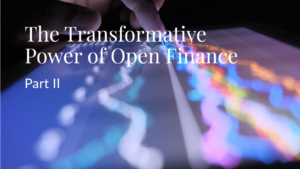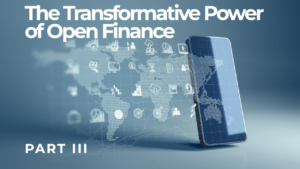We live in a world awash with digital transformation, and yet filled with painful and broken user experiences ranging from systemic biases and dark patterns to just poor customer service across services and products. The digital era started out with excitement and great hope and is now heading to a state of entropy, disorder and chaos.
However, a beacon of change is on the horizon, promising to illuminate the path to a more accessible, personalized, and empowering financial future. This post delves into the seismic shift from open banking to open finance, a revolution that could redefine our interaction with the digital world at its core. It’s a journey from the fragmented experiences of today to a cohesive, user-centric tomorrow. Here’s why every stakeholder in the digital and financial ecosystem should sit up and take notice.
The Imperative of Understanding Open Banking and Open Finance
Before we venture further, let’s demystify some terms. Open banking is a system where banks open up their data and services to third parties through APIs (Application Programming Interfaces). This movement, initiated for enhanced competition and innovation, empowers consumers to share their financial data with trusted entities, leading to more personalized financial services and products.
However, open banking is merely the first chapter in a larger narrative. Enter open finance, an extension that encompasses a broader range of financial services beyond traditional banking. In addition it includes investments, pensions, insurance, taxation and more, offering a holistic view of a consumer’s financial footprint. This paradigm shift towards open finance expands the scope of services available to consumers and heralds an era of unprecedented financial empowerment and inclusivity.
The Landscape of Open Banking: A Prelude to Open Finance
The landscape of open banking has been characterized by rapid evolution, driven by regulatory mandates like PSD2 and PSD3 in Europe, open banking regulations in the UK, and market-led initiatives in other regions. These regulations compel banks to share data with third-party providers (TPPs), thereby fostering innovation and competition. Consumers benefit from a wide array of financial services, such as more competitive loans, enhanced personal financial management tools, and seamless payment options, all tailored to their specific needs and preferences.
However, the vision of open banking is constrained by its limited focus on banking data. While it has laid the groundwork for a more competitive and innovative financial ecosystem, the true potential of this openness is realized when we transition to open finance. This broader perspective allows for a more integrated and comprehensive approach to financial services, addressing the needs and aspirations of consumers in a more holistic manner.
At the heart of open banking and open finance lies the principle of user empowerment—illustrated vividly by frameworks like India’s Account Aggregator system or the United States’ proposed implementation of Section 1033 of the Dodd-Frank Act by the Consumer Financial Protection Board(CFPB). These initiatives enable consumers and businesses to wield control over their financial data, breaking the monopoly of traditional institutions and fostering a more inclusive market landscape.
Open Finance: Beginning of a New Order
In a digital age where consumer experiences often feel painfully fragmented and impersonal, the advent of open finance stands as a beacon of potential transformation.
This narrative isn’t just about financial transactions; it’s about how the very fabric of the open internet could be rewoven to prioritize user empowerment and inclusivity. Here, we will explore why the transition from open banking to open finance isn’t a future ambition—it’s an immediate necessity.
Open finance’s potential extends beyond traditional financial products like loans, insurance, wealth management and account to account (A2A) transfers to solving KYC and identity issues along with seamless and frictionless access to more financial products like insurance and wealth management.
By leveraging financial data, businesses can tailor offerings to meet the nuanced needs of diverse consumer groups. Imagine a world where a price-sensitive consumer is offered a product variant that aligns perfectly with their financial behavior—a reality made possible through open finance.
However, this power comes with a responsibility to ensure ethical use. As we navigate the personalization of services, we must erect safeguards against discrimination, ensuring that financial data serves to empower rather than exclude.
Placing User Consent at the Heart of Innovation
The success of open finance hinges on user consent—a principle that has proven effective in creating a consumer-centric ecosystem. This model offers consumers a direct pathway to a wider array of services, ensures unbiased decision-making through data anonymization, and upholds the right to withdraw consent at any time. For businesses, this translates into targeted engagement and significantly lower acquisition costs.
One has to only look at the number of consents the open finance frameworks in India sees every day to know it works. India’s account aggregator ecosystem recorded consent based data sharing driven transactions over 51 million per month as of February 2024 and the month isn’t over with about 2 billion financial accounts connected to the open finance network (called as the Account Aggregator network in India)!
The open finance movement, particularly in countries like India and Brazil, showcases a compelling narrative: consent management benefits both consumers and businesses, debunking myths about user friction and drop-offs. The open finance model presents a blueprint for a more equitable digital ecosystem, where value exchange from data sharing becomes a cornerstone of user-business interactions.
Open Finance Plus: Enhancing the Role of Open Finance
To truly harness the potential of open finance, we must broaden the scope of open finance APIs and data management systems to include non-financial data sources. This expansion not only enhances financial decision-making but also fosters innovation across sectors, improving consumer experiences through a holistic understanding of user journeys.
Use Cases: Addressing Non-Financial Challenges
1. Improving Healthcare experience in the U.S.: The healthcare system often leaves patients navigating a labyrinth of institutional red tape. The author encountered this when a family member needed an urgent MRI but faced delays due to insurance pre-authorizations between hospital networks. Expanded Open finance framework capabilities could revolutionize this, granting patients control over their insurance data and streamlining healthcare access.
Similarly, with prescriptions for medicinal drugs, we should be able to find prices for the prescribed medicine and buy it from the source offering the best price. Why should we need the doctor’s office to move prescriptions to Mark Cuban’s Cost Plus Drugs from CVS or Walgreens instead of doing it ourselves at our convenience?
2. Revitalizing the Adtech and Open Web Ecosystem: In the realm of digital advertising and the open web, dominated by giants like Google, the phase-out of third-party cookies marks a pivotal shift. These cookies, once the web’s backbone, are now being replaced in Chrome—Google’s leading browser, the last to join this global transition. The search for alternatives has unveiled a spectrum from persistent IDs to anonymized data compilations, as seen in Google’s Privacy Sandbox initiative. Yet, amid these technological evolutions, the concept of user empowerment through consent remains oddly overlooked. Apple’s approach in its iOS ecosystem, offering users a simple choice to share or withhold their data, hints at the possibilities.
Imagine a streamlined journey from seeing a financial advertisement to purchasing the product, where consented data sharing accelerates discovery, decision, and acquisition phases. Such a scenario, fueled by open finance APIs, integrates the adtech sphere with financial services, weaving together a tapestry of user choices and enhanced experiences.
This vision champions a digital marketplace where data sharing is not only consensual but also a pathway to more personalized, efficient, and empowering user engagements beyond advertising from financial advertisers..
3. Financial Inclusivity Beyond Buzzwords: Financial inclusivity must extend to leveraging non-financial data for empowering underrepresented groups. A revelation came when researching Filipino street vendors’ financial quandaries for Sahamati, underscoring the need for systems that support individuals’ aspirations through informed financial planning.
Envision an AI-powered simplistic jargon free app that provides access to credit from formal financial institutions at a lower cost and crafts personalized plans based on your life’s desires, captured from your digital footprints like online searches, shopping cart choices, and even the items you hesitated to purchase. This app, built on consented data sharing via expanded open finance APIs, invites everyone to partake in the financial system, offering paths to financial growth that resonate with individual lifestyles and aspirations while saving and investing for the future.
4. Rebuilding the Global Open Internet: Crafting seamless bridges between financial and non-financial data isn’t just beneficial—it’s essential for elevating user experiences and empowerment.
The magic lies in connecting interoperable frameworks globally that work on acceptable standards for tokenization, encryption and other data protection PETs that transcend borders, making the integration of banking and financial information with non-financial ecosystems making the shift to open data, a smoother journey.
Imagine the power of a single, harmonious system that allows for effortless cross-border transactions and data flows, tailored to local nuances yet universally accessible.
This vision transcends mere ambition—it embodies a foreseeable future in which technology enhances human lives through transparency, inclusivity, and collective well-being.
Going Forward
Nations such as India and Brazil have already paved the way in the realm of open finance, setting benchmarks of success and innovation. Watching the open finance ecosystem in the United States ascend, introducing groundbreaking innovations and steering away from the path of entropy and chaos towards negentropy, promises to be an exhilarating journey.
In parts 2 to 5, we’ll delve into specific use cases and explore how national policies and regulations have shaped the landscape of open finance in the two largest democracies: the United States and India.
Fascinatingly, the strategies of these nations lie on opposite ends of the spectrum—the United States advocates for a free-market stance, empowering enterprises to establish themselves as global pioneers, whereas India sets a global standard with its leadership in Digital Public Infrastructure (DPI). It would be fantastic to see their open banking and open finance frameworks pioneer interoperability, paving the way for effortless cross-border payments, differential pricing, financial and non financial data transfers, anti money laundering (AML), identity and Know Your Customer (KYC) management and beyond. More in our next!

